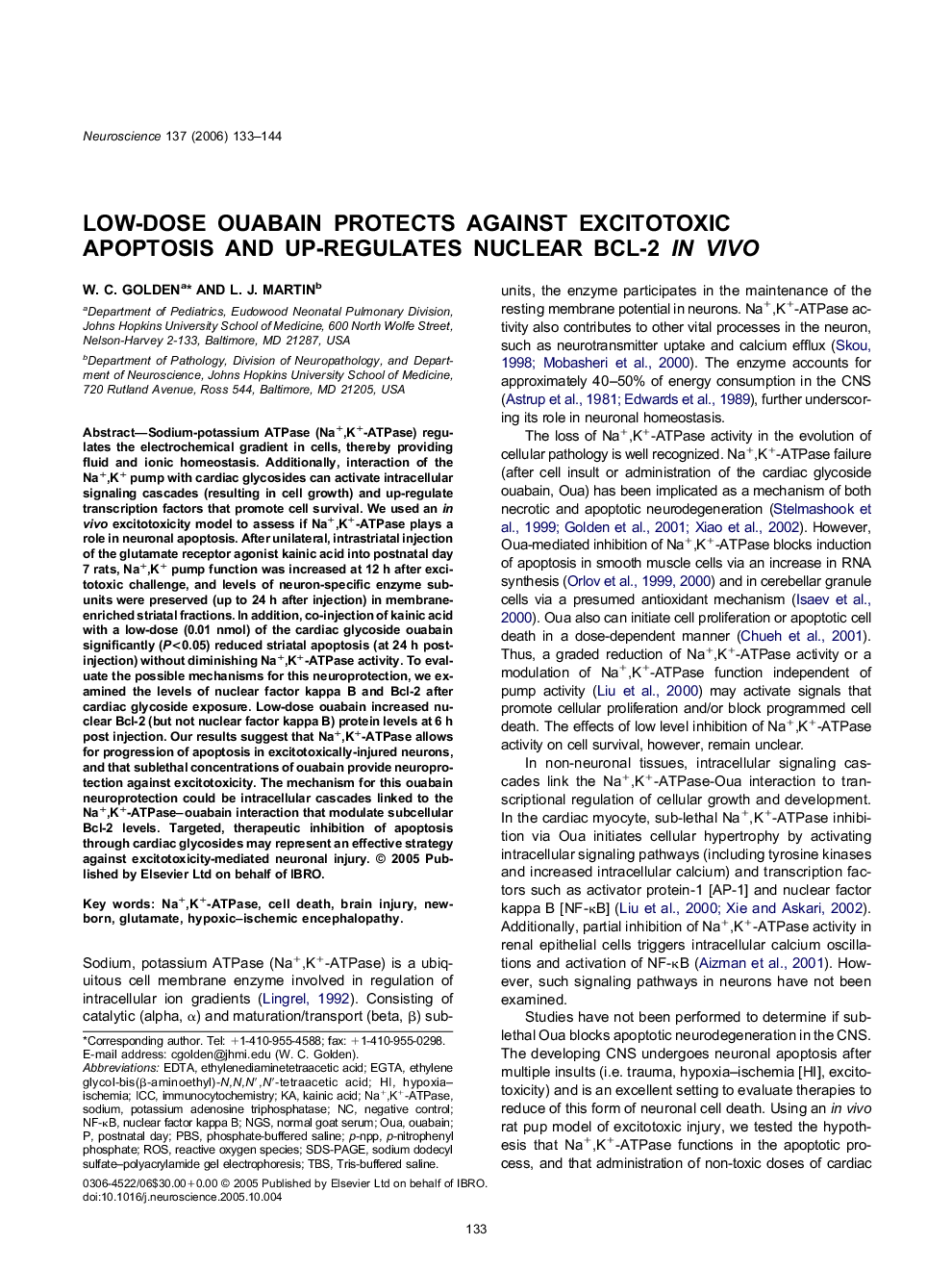| Article ID | Journal | Published Year | Pages | File Type |
|---|---|---|---|---|
| 6278722 | Neuroscience | 2006 | 12 Pages |
Abstract
Sodium-potassium ATPase (Na+,K+-ATPase) regulates the electrochemical gradient in cells, thereby providing fluid and ionic homeostasis. Additionally, interaction of the Na+,K+ pump with cardiac glycosides can activate intracellular signaling cascades (resulting in cell growth) and up-regulate transcription factors that promote cell survival. We used an in vivo excitotoxicity model to assess if Na+,K+-ATPase plays a role in neuronal apoptosis. After unilateral, intrastriatal injection of the glutamate receptor agonist kainic acid into postnatal day 7 rats, Na+,K+ pump function was increased at 12 h after excitotoxic challenge, and levels of neuron-specific enzyme subunits were preserved (up to 24 h after injection) in membrane-enriched striatal fractions. In addition, co-injection of kainic acid with a low-dose (0.01nmol) of the cardiac glycoside ouabain significantly (P<0.05) reduced striatal apoptosis (at 24 h post-injection) without diminishing Na+,K+-ATPase activity. To evaluate the possible mechanisms for this neuroprotection, we examined the levels of nuclear factor kappa B and Bcl-2 after cardiac glycoside exposure. Low-dose ouabain increased nuclear Bcl-2 (but not nuclear factor kappa B) protein levels at 6 h post injection. Our results suggest that Na+,K+-ATPase allows for progression of apoptosis in excitotoxically-injured neurons, and that sublethal concentrations of ouabain provide neuroprotection against excitotoxicity. The mechanism for this ouabain neuroprotection could be intracellular cascades linked to the Na+,K+-ATPase-ouabain interaction that modulate subcellular Bcl-2 levels. Targeted, therapeutic inhibition of apoptosis through cardiac glycosides may represent an effective strategy against excitotoxicity-mediated neuronal injury.
Keywords
NF-κBOUAPBSNGSICCTBSEGTANa+,K+-ATPasep-NPPp-nitrophenyl phosphateROSbrain injuryHypoxic–ischemic encephalopathyEDTAEthylenediaminetetraacetic acidkainic acidsodium dodecyl sulfate–polyacrylamide gel electrophoresisSDS-PAGEOuabainImmunocytochemistryTris-buffered salinepostnatal daynormal goat serumnuclear factor kappa BPhosphate-buffered salineCell deathNewbornhypoxia–ischemianegative controlglutamateReactive oxygen species
Related Topics
Life Sciences
Neuroscience
Neuroscience (General)
Authors
W.C. Golden, L.J. Martin,
